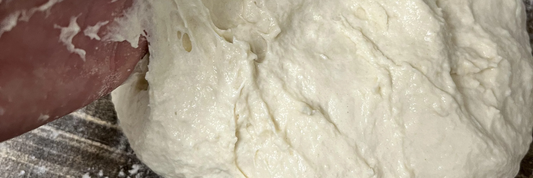The types of American cheese go far beyond the classic yellow slices you find in burgers. From creamy mild varieties to bold, tangy options, each type offers its own texture, flavor, and culinary charm. Understanding the different types of American cheese helps you choose the perfect match for sandwiches, pastas, snacks, and gourmet creations.
- American Cheese vs Swiss Cheese: What’s the Difference & Which One Is Better for You?
- 5 Must-Haves in a North American Cheese Box
- How to Identify Different Types of Cheese
- California Cheese: Flavors, Origins, and How to Store It Sustainably
What Is American Cheese?
American cheese refers to two main categories: the widely recognized processed cheese slices and the natural cheeses originally developed or perfected in the United States, such as cheddar, Monterey Jack, and Colby. While processed American cheese is made by blending natural cheeses with emulsifiers and stabilizers to achieve a smooth, melt-friendly texture, natural American cheeses are crafted traditionally from milk, cultures, and rennet without added emulsifiers.

The history of American cheese dates back to the late 19th century, when dairy farmers in the U.S. adapted European cheesemaking techniques to local ingredients and consumer preferences. Processed American cheese, as we know it today, was popularized in the early 20th century for its long shelf life, consistent quality, and unbeatable meltability qualities that made it a fixture in diners, school cafeterias, and home kitchens.
What makes American cheese unique is its balance of flavor and functionality. Whether mild and creamy or sharp and robust, it melts evenly without separating, making it ideal for everything from a gooey grilled cheese sandwich to a perfectly topped burger. Its versatility means it can star in both casual comfort foods and elevated gourmet dishes.
Cheddar American Cheese
Cheddar is one of the most beloved and widely produced American cheeses, known for its bold personality and range of intensities. Its flavor profile can vary from mild and buttery to sharp, tangy, and even slightly nutty, depending on the aging period. Younger cheddar offers a smooth, mellow taste, while aged cheddar develops crystalline texture and a punchier, more complex flavor.
Cheddar’s color ranges from pale white to a rich, deep orange thanks to the natural dye annatto, which is added for visual appeal but does not affect taste. This visual variety often helps chefs create eye-catching cheese boards or colorful sandwiches.
In the kitchen, cheddar is remarkably adaptable. Mild cheddar is perfect for melting into grilled cheese sandwiches, topping burgers, or stirring into creamy mac and cheese. Sharp cheddar adds depth to soups, baked potatoes, and savory pies. For a sweet-and-savory twist, it pairs beautifully with crisp apple slices, grapes, or even a drizzle of honey. On a cheese platter, cheddar’s tanginess balances the saltiness of cured meats and the crunch of artisan crackers.
Whether you’re looking for a dependable everyday cheese or a flavor-packed centerpiece for your recipes, cheddar American cheese delivers both comfort and sophistication in every bite.
Mozzarella American Cheese
Mozzarella is one of the most popular cheeses in the United States, prized for its mild, milky flavor and its signature stretchy, gooey texture when melted. American-made mozzarella ranges from fresh, delicate balls stored in brine to low-moisture varieties that brown beautifully in the oven.
Its mild taste makes it a blank canvas for countless recipes. Fresh mozzarella is ideal for salads, particularly the classic Caprese, where it’s paired with ripe tomatoes, fragrant basil, and a drizzle of extra virgin olive oil. Low-moisture mozzarella shines on pizzas, lasagnas, and baked pasta dishes, delivering that irresistible cheese pull everyone loves.
Pairing mozzarella is simple yet endlessly satisfying. It complements fresh vegetables like zucchini and roasted peppers, works beautifully with cured meats such as prosciutto, and pairs harmoniously with fruity olive oils or balsamic glaze. For casual gatherings or café menus, mozzarella can be served alongside crusty bread, marinated olives, and fresh herbs for an easy yet elegant cheese plate.
Brie American Cheese
Brie, often associated with French cheesemaking, has been embraced and mastered by American artisans who produce exceptional varieties with a distinct local character. American brie is soft and creamy with a delicate, edible white rind that adds a subtle earthiness to its flavor profile. Inside, the cheese is rich, buttery, and luscious, often with gentle mushroom-like notes.
This cheese is a star at room temperature, where its texture becomes luxuriously spreadable. Baked brie is a popular preparation, often wrapped in puff pastry and topped with fruit preserves or nuts for a crowd-pleasing appetizer. In sandwiches, it brings a silky richness that elevates simple combinations like turkey and cranberry or roasted vegetables.
Brie pairs exceptionally well with sweet and nutty accompaniments. Honey, figs, and walnuts enhance its creaminess, while tart berries or crisp apples provide a refreshing contrast. On a cheese board, brie works as the mellow, indulgent counterpart to sharper cheeses and salty charcuterie.
Swiss American Cheese
Swiss American cheese is beloved for its mild, nutty flavor and unmistakable round holes, formed naturally during the fermentation process as carbon dioxide is released by specific bacterial cultures. Its pale yellow hue and smooth, semi-firm texture make it as attractive on a cheese platter as it is functional in a hot sandwich.
What sets Swiss American cheese apart is its balance, it has enough character to be interesting, yet it remains gentle enough to appeal to a wide audience. This versatility is why it’s found in delis, diners, and gourmet kitchens alike. The cheese melts evenly and holds its flavor well, making it a star ingredient in classics like the Reuben sandwich, where it mingles with corned beef, sauerkraut, and creamy dressing to create a perfect bite.
In fondue pots, Swiss blends seamlessly with wine, garlic, and seasonings, producing a silky dip for bread cubes, vegetables, and even fruit. When served cold, thin slices complement turkey, ham, or roast beef sandwiches, adding a creamy contrast to crisp lettuce and tangy condiments.
For pairing, think balance and harmony. Ham and Swiss with mustard on rye bread is a timeless American deli favorite. On a cheese board, Swiss plays well with grapes, figs, and roasted nuts. You can also pair it with a crisp white wine like Sauvignon Blanc or a light beer to enhance its nutty undertones.
Blue American Cheese
Blue American cheese is a bold statement piece on any table. Its creamy body laced with striking blue or green veins comes from the addition of Penicillium cultures, which create its signature sharp, tangy, and sometimes earthy flavors. The taste can range from moderately salty and tangy to intensely pungent, depending on the variety and aging process.

In the kitchen, blue cheese is both a flavor enhancer and a centerpiece. Crumbled over fresh arugula or wedge salads, it delivers a punch that transforms a simple plate into a gourmet experience. When melted over sizzling steaks, its tangy richness cuts through the meat’s fattiness for an unforgettable bite. Gourmet burgers topped with blue cheese instantly rise from casual fare to restaurant-quality dishes, and it’s also the secret weapon in creamy blue cheese dressings, dips, and sauces.
Pairing is all about contrast. Sweet fruits like pears, figs, and apples counterbalance its saltiness, while honey or balsamic glaze drizzles soften and round out its assertive notes. Toasted walnuts, pecans, or almonds add a satisfying crunch and earthiness. For beverages, bold red wines like Cabernet Sauvignon or a sweet Port create a luxurious pairing, while craft beers with malty depth can complement the cheese’s richness.
Blue American cheese isn’t for everyone its strong character divides opinion but for those who love complex flavors, it’s an irreplaceable ingredient that adds depth and sophistication to both everyday meals and special occasions.
Parmesan American Cheese
Parmesan American cheese brings a burst of savory depth to any dish. Inspired by the traditional Italian Parmigiano-Reggiano but crafted in the United States, it retains that iconic nutty, salty character, while often being slightly milder in sharpness depending on the producer. Its hard, granular texture comes from months sometimes years of aging, during which moisture slowly evaporates, intensifying its flavor and giving it that satisfying crumble.
In American kitchens, Parmesan is the finishing touch that turns good dishes into great ones. Grated over steaming pasta, it melts slightly, coating each strand with umami richness. A sprinkle on creamy risotto or hearty soups like minestrone instantly lifts the flavor profile. Even simple dishes like garlic bread or roasted vegetables benefit from a dusting of Parmesan, which brings a savory kick without overpowering other ingredients.
When pairing, simplicity works best. A drizzle of extra virgin olive oil over shaved Parmesan makes a sophisticated appetizer, while balsamic vinegar provides a sweet counterpoint to its saltiness. Fresh, crusty bread is its perfect partner, especially when used to scoop up any cheese shavings left on the plate. For drinks, crisp white wines like Pinot Grigio or sparkling Prosecco balance the cheese’s salty richness beautifully.
Feta American Cheese
Feta American cheese, often made from cow’s milk or a blend of milks rather than the traditional sheep’s milk, delivers a briny, tangy punch and a soft, crumbly texture. Its bright, salty flavor profile makes it a standout in Mediterranean-inspired dishes, and it brings both freshness and complexity to the table.
One of feta’s greatest strengths is its versatility. Crumbled over a classic Greek salad with tomatoes, cucumbers, red onions, and olives, it ties all the ingredients together with its creamy, savory bite. In wraps or pitas, it pairs beautifully with grilled chicken or lamb, adding richness without heaviness. Sprinkled into omelets or frittatas, it gives a burst of flavor in every forkful.
Pairing feta is all about enhancing its tangy personality. Juicy tomatoes, crisp cucumbers, and briny olives create a harmonious balance. Fresh herbs like dill, mint, or oregano bring out its Mediterranean roots. For bread lovers, warm pita or crusty baguette works perfectly as a base for feta-topped spreads and dips. For drinks, try pairing it with a light, citrusy white wine such as Sauvignon Blanc or a refreshing lager.
How to Choose the Right Type of American Cheese for Your Recipe
When choosing American cheese, it’s important to look beyond just what’s available in your fridge. The type you select can dramatically influence your dish’s taste, texture, and overall presentation. Each variety brings its own strengths, so matching the right cheese to the right recipe is both an art and a science.

Match flavor intensity with your other ingredients
- If your recipe features delicate flavors such as turkey sandwiches, fresh veggie wraps, or mild omelets go for mild American cheese slices or young Cheddar American cheese. These are often considered the best American cheese for sandwiches because they complement rather than overpower.
- For dishes that need a strong flavor punch, like gourmet burgers, steak melts, or loaded mac & cheese, choose sharp Cheddar American cheese or Blue American cheese. Their tangy, bold character cuts through rich, heavy ingredients and creates a more memorable bite.
Consider meltability and texture
- For recipes where smooth, creamy melting is essential think quesadillas, grilled cheese sandwiches, cheeseburgers, or cheesy casseroles opt for processed American cheese, Mozzarella American cheese, or Swiss American cheese. They melt evenly without becoming oily or grainy, making them ideal American cheese for cooking.
- When you want texture rather than melt such as crumbles in salads, toppings for flatbreads, or rustic garnishes for pasta Feta American cheese or Parmesan American cheese will add both flavor and visual appeal. Their crumbly, aged nature brings a satisfying bite to fresh, cold, or baked dishes.
Balance budget with recipe goals
- For large-scale cooking or café service where cost control is key, processed American cheese slices and young Cheddar deliver great flavor at an affordable price point. They’re reliable, versatile, and perfect for high-volume recipes.
- For fine dining, special occasions, or a menu that demands sophistication, invest in premium options like Brie American cheese, artisan Blue American cheese, or aged Cheddar American cheese. These varieties elevate your dishes and create a gourmet experience customers will remember.
Think about the eating experience
- Creamy cheeses like Brie and Mozzarella give a soft, luxurious mouthfeel, perfect for indulgent appetizers and warm dishes.
- Harder cheeses like aged Parmesan provide texture contrast and a savory depth, great for sprinkling over salads, soups, and pastas.
- Bold cheeses like Blue or sharp Cheddar create strong flavor anchors, making them excellent centerpieces for a cheese board or the star ingredient in a signature sandwich.
By keeping these points in mind, you can confidently pick the best American cheese for any occasion whether you’re creating a quick weeknight meal, preparing a crowd-pleasing party platter, or designing a signature menu item for your café or restaurant. The right cheese choice transforms your cooking from ordinary to unforgettable.
FAQs About Types of American Cheese
What are the most popular types of American cheese?
The most common varieties include Cheddar American cheese, Mozzarella American cheese, Brie American cheese, Swiss American cheese, Blue American cheese, Parmesan American cheese, and Feta American cheese. Each has its own flavor profile, texture, and best uses, from creamy melt-in-your-mouth options to crumbly aged selections.
Is American cheese the same as processed cheese slices?
Not always. While many people associate American cheese with individually wrapped processed slices, the term also refers to natural cheeses made in the USA, such as American-made Cheddar, Brie, and Blue cheese. Processed American cheese is valued for its smooth meltability, while natural varieties offer more complex flavors.
Which type of American cheese is best for sandwiches?
For classic deli sandwiches and burgers, mild Cheddar American cheese, Swiss American cheese, or processed American cheese slices work well. For gourmet sandwiches, try Brie for creaminess or Blue cheese for a bold twist.
What American cheese melts the best?
Processed American cheese is famous for its flawless melting perfect for grilled cheese, cheeseburgers, and casseroles. Mozzarella American cheese and Swiss American cheese also melt smoothly, making them great for pizza, pasta bakes, and hot sandwiches.
Which American cheese has the strongest flavor?
Blue American cheese has the most intense, tangy flavor, followed by extra-sharp Cheddar American cheese. These varieties are best used in dishes where their boldness can shine, such as salads, gourmet burgers, and cheese boards.
Are all American cheeses suitable for people with lactose intolerance?
Not all, but many aged cheeses like Cheddar, Parmesan, and Swiss contain very low levels of lactose. Individuals with mild lactose intolerance often tolerate these cheeses better, but sensitivity varies from person to person.
Conclusion
From mild and creamy Mozzarella to bold and tangy Blue, the many types of American cheese bring endless possibilities to your kitchen. Whether you’re preparing a quick grilled cheese, crafting an elegant cheese board, or adding a flavorful topping to pasta, there’s a perfect variety to match your recipe and taste. By understanding each cheese’s unique flavor, texture, and ideal uses, you can elevate any dish from simple to unforgettable.
At Kimecopak, we help cafés, restaurants, and food businesses keep cheeses fresh, safe, and beautifully presented with our eco-friendly cheese packaging solutions. If you’re looking for the right packaging to store American cheese or want expert guidance on choosing the best options, contact us today and let’s create a solution that works for you.







